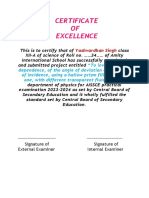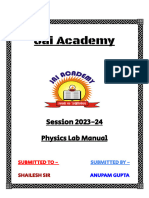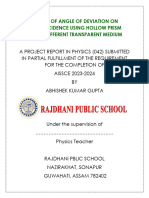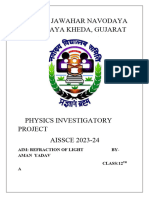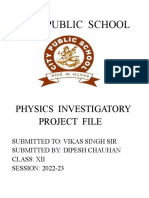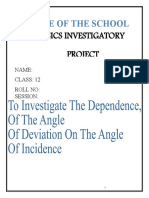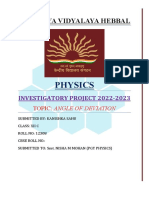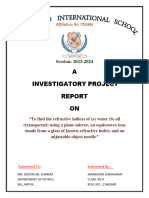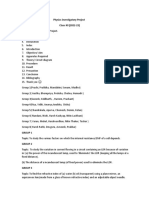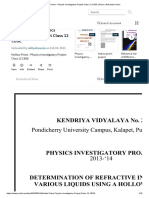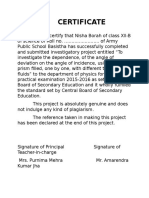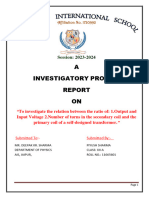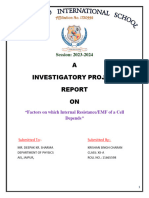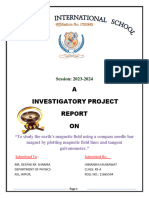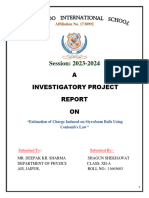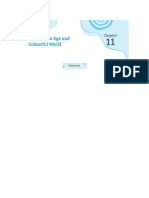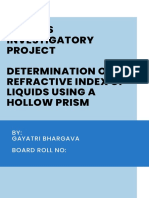0% found this document useful (0 votes)
342 views16 pagesDusyant - Hollow Prism
The procedure is repeated by filling the prism with different transparent fluids like water, kerosene oil, etc. one by one and the angle of deviation is noted for each fluid.
9. The angle of deviation D1 was measured using protractor for
the angle of incidence i1 = 400.
10. Similarly, the angles of deviation D2, D3 and D4 were
measured for angles of incidence i2 = 450, i3 = 500 and
i4 = 550 respectively.
11. The above procedure was repeated by filling the prism with
different transparent fluids like water, kerosene oil, etc. one
by one and the angle of deviation was noted for each fluid.
12
Uploaded by
Deepak SharmaCopyright
© © All Rights Reserved
We take content rights seriously. If you suspect this is your content, claim it here.
Available Formats
Download as PDF, TXT or read online on Scribd
0% found this document useful (0 votes)
342 views16 pagesDusyant - Hollow Prism
The procedure is repeated by filling the prism with different transparent fluids like water, kerosene oil, etc. one by one and the angle of deviation is noted for each fluid.
9. The angle of deviation D1 was measured using protractor for
the angle of incidence i1 = 400.
10. Similarly, the angles of deviation D2, D3 and D4 were
measured for angles of incidence i2 = 450, i3 = 500 and
i4 = 550 respectively.
11. The above procedure was repeated by filling the prism with
different transparent fluids like water, kerosene oil, etc. one
by one and the angle of deviation was noted for each fluid.
12
Uploaded by
Deepak SharmaCopyright
© © All Rights Reserved
We take content rights seriously. If you suspect this is your content, claim it here.
Available Formats
Download as PDF, TXT or read online on Scribd
/ 16
